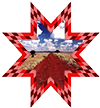What We Do
Mission & Vision
To walk with all our relations on the Red Road of life by remembering, renewing and restoring our traditional roles and values that brings life.
Programs
The Red Road Healing Society offers a variety of programs and services throughout the year; in the day and evening, that are delivered from a cultural grassroots perspective.
Volunteering
The Red Road Healing Society has a lot of information of various events and friends who have contributed. Find out how to become our partner.
Strategy
The Red Road Healing Society is a not for profit Child and Family Resource Center that is accessible, friendly, safe, warm, welcoming and free. Holistic wellness programming for children, youth and families is provided that utilizes a variety of Indigenous cultural perspectives, knowledge and practices. Outreach to the community occurs regularly through home visits, school liaison and special events. Role modeling is exemplified (and required in The Red Road Healing Society’s staff policies) by everyone that works at the centre. Childcare is also provided and whole families are welcomed. Through a variety of professional services designed, developed and delivered to meet the specific needs of the people in the community, the agency maintains a client driven approach that reflects wholistic wellbeing. In turn, this approach strives to balance our clients’ Earth walk, and assist our people in the community with moving forward in their lives.
There are no fees for services and programs and everyone is welcome!
Rationale
It is important to begin to remove the initial barriers of generational trauma by providing professional services for Aboriginal people by Aboriginal people. Through this professional Indigenous approach to programs and services, we help our people remember, restore and renew their traditional teachings and values; thereby, bringing balance and wellness back into their lifestyle. Only then, can we truly assist our people in moving forward with their lives in the sense of education and career development.
Inputs
Our inputs are a variety of programs and services along with professional and assistant staff, partners, facilities, food, equipment, knowledge, materials, office supplies, ceremonial items, musical instruments, transportation, books, videos, childcare and elders.
Activities
The Red Road Healing Society offers a variety of programs and services in the day and evening such as; addictive lifestyle workshops, adolescent programs, annual events, Baby, Think It Over, career development, children’s programs, collective kitchens, counselling, crafts, culture night, educational services, family programs, family violence workshops, grieving workshops, healing circles, health services, home support, legal services, literacy, longhouse gathering night, parenting, prevention (in sense abuse, anger, criminal behavior, grieving, violence etceteras), referral, seasonal events, school outreach, social services, soup and bannock, storytelling, summer kids camp, survivor workshops, tipi-making, and 12 step work. The Akicita youth program and Turtle Island Tiny Tots headstart program is also available when funding permits.
The annual events that occur throughout the year are the; Kids Halloween Party, Talent Show, Christmas Pageant, Welcoming the Light, Round Dance, Valentines Dance, Kiwani Owapi, Spring Break For Kids, Annual Pow Wow, Celebrating the Resurgence of the Buffalo Spirit Gather Herbs, Ceremony, National Aboriginal Week
Outputs
Our outputs are (for example) the number of programs attended by people in the community, the number of people that attended each program, the number of activities that took place, the number of children attending and the number of people that were fed. Also the number of hours of services that were provided by the various staff is a specific output, plus the number of times that the program occurred during the week, month or year.
Indicators of Success
Primarily there is less violence, less addictive behaviours, less abuse, less teen pregnancies, less children being born with development delays (i.e FASD), less children in care, less dropping out of school, less “failure to appear in court”, less crime, less Indigenous people in the correctional centres and less poverty, sickness and mental disorders. Simultaneously, there is more literacy, more reasoning, and generally more “consciousness raising” towards what allows for life, and what shuts it down. This is witnessed (usually in staff observations and reports) by the following:
Clients:
- Are making healthier choices
- Look after their needs more
- Have more self-esteem and success in relationships
- Are less isolated and absorbed into themselves
- Begin to become more involved in the centre learning about their culture and the impacts of generational trauma in their own lives
- Start helping others
- Begin to move beyond the client role… Families begin to get stronger
- Become part of the society and the community at large
- ARE MOVING FORWARD WITH THEIR LIVES
Evaluation Tools
- Abstinence from mood-altering substances and codependent relationships
- Attendance sheets
- Children out of care
- Feedback forms
- Infant, child, adolescent, and youth assessments
- Interviews and focus groups
- Less developmentally delayed births
- Literacy assessments
- Participation in annual events
- Participation in ongoing ceremony
- Partners reports
- Pictures, stories, videos, DVDs
- Program specific assessments
- Self-esteem assessments
- Staff observations, reports, performance reviews
- Surveys
